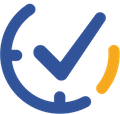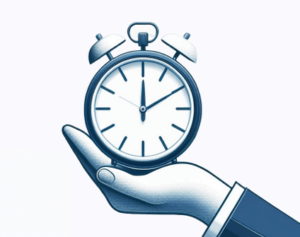Have you ever found yourself frantically rushing to meet a deadline, wondering how you misjudged the time needed for a task? As someone who’s battled the clock countless times, I’ve learned that setting realistic task durations is both an art and a science – one that can make or break your productivity.
“Time is the scarcest resource and unless it is managed nothing else can be managed,” said the management guru Peter Drucker. His words ring true in our fast-paced world, where effective time management is crucial for success.
Understanding Task Duration
Task duration is simply the estimated time it takes to complete a specific activity. It’s the backbone of project planning, resource allocation, and overall productivity. Get it right, and you’re sailing smooth; get it wrong, and you’re in for a bumpy ride.
The concept of task duration estimation has come a long way. Picture this: it’s the 1800s, and you’re part of the team building the transcontinental railroad in the U.S. How do you estimate how long it’ll take to lay tracks across an entire continent?
Back then, it was mostly guesswork based on experience. Fast forward to today, and we’ve got sophisticated tools and techniques at our fingertips. But the core challenge remains the same: how do we accurately predict the future?

The Domino Effect of Inaccurate Estimates
Misjudging task durations can set off a chain reaction of problems. Overestimate, and you’re wasting valuable resources. Underestimate, and you’re setting yourself up for stress, rushed work, and potential failure.
As Thomas Edison wisely said, “Time is really the only capital that any human being has, and the only thing he can’t afford to lose.” When we mismanage our time estimates, we’re essentially squandering our most precious resource.
Factors That Can Throw Your Estimates Off Course
1. Complexity: The more moving parts, the harder it is to predict. Complex tasks often have hidden challenges that only reveal themselves as you dig in.
2. Resource Availability: Having the right tools and people at the right time can make or break your timeline.
3. Skill Levels: A task that takes an expert an hour might take a novice a day. Always consider who’s doing the work when estimating time.
4. The Unknown Unknowns: As former U.S. Secretary of Defense Donald Rumsfeld famously said, “There are known knowns… there are known unknowns… but there are also unknown unknowns.” In task estimation, it’s these “unknown unknowns” that often throw us off course.

Mastering the Art of Estimation
So, how can we get better at this crucial skill? Here are some tried-and-true techniques:
1. Learn from History: Analyze similar past projects. What took longer than expected? What went faster? Use this data to inform your estimates.
2. Break It Down: Large tasks are intimidating and hard to estimate. Break them into smaller, manageable chunks for more accurate predictions.
3. Use the Three-Point Estimate: Consider the best-case, worst-case, and most likely scenarios. This gives you a range to work with and helps account for uncertainty.
4. Build in Buffers: Always add some wiggle room. As a rule of thumb, I add 20% to my initial estimate for unexpected hiccups.
5. Involve Your Team: If you’re working with others, get their input. Different perspectives can reveal potential time-sinks you might have missed.
6. Track and Adjust: Keep a record of your estimates versus actual time spent. Use this data to refine your future predictions.
I once drastically underestimated the time needed for a website redesign project. What I thought would take two weeks stretched into a month, causing stress for both my team and the client. This experience taught me the value of thorough planning and realistic estimations. Now, I always factor in time for revisions, client feedback, and unexpected technical issues.
Leveraging Technology: The Planndu Advantage
We have powerful tools at our disposal. One such tool is Planndu, an app designed to streamline task management and duration setting. Here’s how you can use it:
1. Create a task by tapping the “+” button on the home or calendar screen.
2. Click the bell icon in the bottom bar to open the “Add a Schedule” sheet.
3. Select your desired duration from the pop-up with hours and minutes options.
4. The chosen duration appears at the bottom of your task, easily modifiable if needed.
Planndu’s intuitive interface makes it a breeze to set and adjust task durations, helping you stay on top of your projects and personal tasks.

Estimating task durations requires practice, reflection, and continuous learning. As you hone this skill, you’ll find yourself less stressed, more productive, and better equipped to tackle complex projects.
As the philosopher Seneca said, “It is not that we have a short time to live, but that we waste a lot of it.” By mastering the art of task duration estimation, you’re taking a significant step towards making the most of your time.
So, are you ready to take control of your time and boost your productivity? Start by downloading Planndu and putting these techniques into practice!




